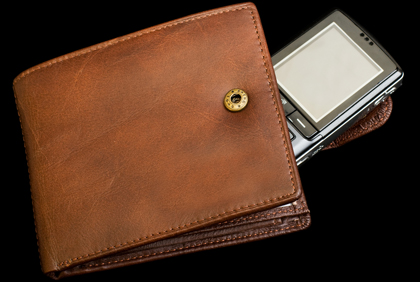When mobile wallets go mainstream—in three to four years—the really good ones will share six basic attributes, said Robert Schlaff, director of mobile solutions, Citigroup.
He was part of a team that produced an in-depth report titled “Upwardly Mobile,” that analyzes the evolution of payments and predicts the next steps.
As the report says in its introduction, “In developed markets where access to financial services is more commonplace, the mobile payments opportunity is based more on providing feature-rich products that enhance the consumers' banking or shopping experience. Mobile commerce is already transforming the way consumers shop, blending the online and off-line into a single homogenous view. Adoption will depend on using mobility to enhance the consumer's buying experience and leveraging mobile information to create additional consumer value.” Download the full report at
https://www.citivelocity.com/citigps/.
Schlaff, appearing at the NACHA Payments 2012 conference in Baltimore, spoke about the six key elements his team identified:
1. Different markets require different wallets. In emerging markets, like subSaharan Africa, mobile wallets mainly replace cash, he said. In developed markets, mobile wallets actually replace physical wallets, which turn the smartphone into a “smart wallet,” combine brick-and-mortar branches with the online channel, and link payments to the overall purchasing flow, such as advertising, selection, and receipt.
“The point is to think about who is your customer and what are you trying to do,” said Schlaff.
2. Lower cost can be transformational. Wireless technology has greatly reduced the cost to own a phone. “The key to the wireless telephone is that the cost to provide one versus a fixed line is probably five to ten times lower. With mobile financial services, instead of a bank account needing to produce around $100 in order to make a profit in terms of bank branches and customer services…you’re looking at a cost more like $10 in revenue in order to be a profitable business. This is an amazing difference,” Schlaff said.
3. Simplicity is powerful. He cited Citi’s experience in Kenya, where in 2007 it introduced a service called M-PESA, a text-messaging service that allows transfers, withdrawals, and account records. Ten years prior to that, only 20% of Kenyans had bank accounts. Now, 60% of the population has accounts.
“Citi offers a mobile B2B collections service based on simple text messaging, even in developed markets,” he said. “It works everywhere and people understand it.”
4. Focus first on adoption and then expansion. Begin by just offering the services people want most, which tend to be remittances, bill payment, and payment for goods and services.
“We can give people a mobile wallet in North America,” said Schlaff. “Eventually we’ll get to it. But really it’s about, what are the things people really want? People will want to be able to pay for their coffee when they’re going on a run. People want to be able to pay their train ticket easily by their mobile phone. These are the kinds of things we should provide today to engage them, rather than saying, `Let’s give them everything at once.’ We’ll get there eventually, but we need to drive adoption through these very specific use cases.”
5. Focus on the entire consumer experience. Starbucks’ mobile wallet provides the perfect example. Said Schlaff: “It works today; it does not need any additional hardware or a special phone [it uses bar code scanning]. It’s not just payments; it takes a consumer-centric approach by consolidating useful consumer tools. It makes it easy to earn, check, and use loyalty points. And it allows for partitioning of money into [what’s perceived] as ‘coffee money,’ or, essentially, what the user treats as a reloadable gift card to him- or herself.”
6. Connect to the larger ecosystem. “It’s more than just payments,” said Schlaff. He illustrated this with the Google example: A customer wants to go to a restaurant. First, there’s an internet search. Then, restaurant reviews are sought. Coupons or other offers are provided. Once dinner is over, the meal is paid through the mobile wallet. Afterward, the experience is shared. At each of these steps, Google has a specific service to offer the customer. Citibank is one of the partners in the Google wallet.
“It creates this entire end-to-end experience,” he said.
Summing up, Schlaff paraphrased Peter Drucker, the management consultant and writer: “To really get a consumer to change, a new product needs to have ten times the benefit of the old product…When mobile wallets hit in three or four years, they’re not going to look like what we think of today. It’s going to be pretty different.”
|
About the Author
John Ginovsky is contributing editor of Banking Exchange and editor of the publication’s Tech Topics e-newsletter. For more than two decades he has written about the commercial banking industry. In particular, he’s specialized in the technological side of banking and how it relates to the actual business of banking. He previously was senior editor for Community Banker magazine (which merged with Banking Exchange) and was a staff writer for ABA’s Bankers News. You can email him at [email protected]
|
|

|
















